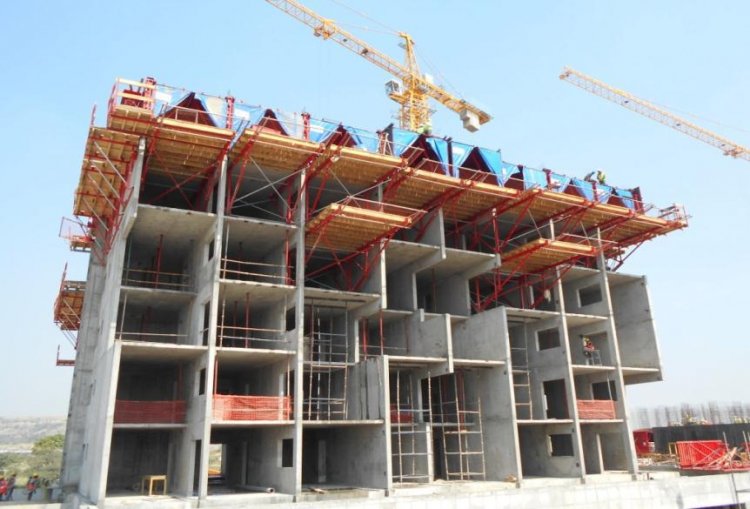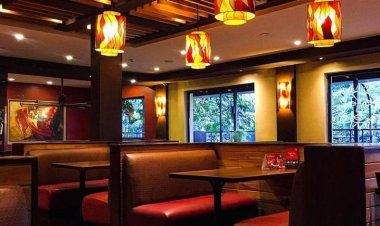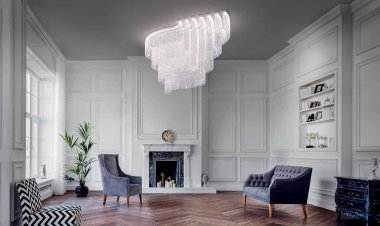Tunnel Form Technology: Revolutionising Construction Efficiency in Kenya
Tunnel-form technology has different benefits over conventional column-beam-slab construction, which may resolve the difficulties tackled by designers, construction managers and contractors.

Although Tunnel Form technology has been around for more than 50 years, it has just recently gained popularity in Kenya. Tunnel form is a type of formwork that allows for the simultaneous pouring of concrete for walls and slabs, causing a monolithic RCC structure. It combines in-situ construction's flexibility and cost with speed, quality, and accuracy.
This formwork is made up of steel, the size of a room which is used for casting the RCC floor slabs and walls of a building to build a monolithic structure by the continuous pour.
The moulds are then heated with hot air blowers to speed up the concrete curing process. This technique is the most cost-effective when the structure consists of a large number of identical units.
The reinforcing, electrical and sanitary conduits, as well as the tunnel forms, are all installed in a specific order. After that, concrete is poured, the forms are covered, and blowers of hot air are arranged inside.
The formwork is de-shuttered the succeeding day and cranes are used to transport them to the next location. Tunnel shape is best used in multi-unit shear wall structures with the same floor arrangement.
Residential blocks, hotels, student housing, barracks, and prisons are all examples of projects that benefit from repeating cellular architecture.
In terms of speed of construction, quality of finish, long life, low labour costs with high production levels and greater earthquake resistance, no other construction approach compares to the Tunnel Form. It also offers improved economics due to the system's all-steel face, which allows for a lengthy formwork lifespan and several reuses.
Tunnel form CIP is a reinforced concrete cellular structure built utilising a modern technique of construction (MCC). This system combines factory quality, speed, and accuracy with the flexibility of on-site construction. The technology allows the simultaneous installation of walls and decks in constructions that require repeating components. A single-story building of up to 4000 square feet can be constructed per day.
Box cut-outs for windows, doors, stairwells, and utility ducts can be accommodated by the formwork’s panels, which can be re-used 500 to 1000 times.
The formwork must be assembled using a tower crane. The main encouragement is extremely fast construction and a 20 to 35 per cent cost reduction for bigger projects.
It is best for mass housing and quick-build projects that require a lot of repetition. While formwork has a high initial cost, it is more than offset by speedier construction, a higher number of repetitions, zero rework, and minimal maintenance costs. The system creates a load-bearing concrete wall slab structure that can be used in a variety of applications.
Tunnel form technology, like any other new technology, necessitates a different approach to many aspects and challenges of construction than traditional projects.
Challenges of Using this Technology
The building should be designed in such a way that tunnel-form technology can be used. The decision to use tunnel formwork should be taken well before the finalisation of the building's concept.
The supplier of tunnel formwork should also be in the team from an early stage so that their ideas can adjust the cost to be lower than the tunnel form which can be incorporated into the design. Delivery of tunnel forms in time can only be assured by having the vendor on board at an early stage.
The higher tunnel form capital expense should be justified by the number of flats (repetition).
The concrete mix should be carefully formulated to allow pouring all of the concrete in a single pour, as well as having the appropriate workability and early strength development. Other resources like a tower crane, concrete batching, and rebar handling and installation should be able to match the tunnel form's speed.
The tunnel form should be handled by trained personnel because it involves more assembly (mechanical work) than carpentry. Many of the benefits will be lost if the formwork is not managed and kept properly.
Tunnel-form technology has different benefits over conventional column-beam-slab construction, which may resolve the difficulties tackled by designers, construction managers and contractors.
Many of these benefits are still valid when compared to monolithic slab-wall construction using Aluform which is commonly recognized as Mivan technology.
Adopting this technology is a must for gaining high seismic resistance due to monolithic slab and wall construction which in turn reduces the number of joints and improves water tightness, reduces labour cost and unskilled manpower management.
Other benefits include a reduction in mobilisation costs on a construction project and reduced construction times. The slab casting cycle can be up to 3 times faster than the conventional method. This technology results in achieving higher quality finishes –fair-faced finish concrete and hence saving from the need for plastering.
Last but not least, if the technology is implemented early in the project planning and design stage, project costs can be reduced by up to 25%.
If you have a real estate press release or any other information that you would like featured on the African Real Estate Blog Post, do reach out to us via email at [email protected]

































